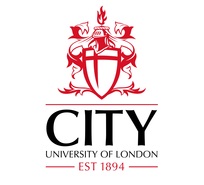
Résumé
R290 has obvious advantages in aspects of environmental protection and thermal properties, and researches on R290 room air conditioners (RACs) are attracting more and more attention. As for R290 RAC, the suction temperature is continuously low and a large number of refrigerants are dissolved in the compressor oil sump during defrosting process, resulting in a longer time length of the start-up process after defrosting. Two reverse-cycle defrosting methods, the discharge-throttling method (DTM) and suction-discharge bypass method (SDBM) are proposed in order to solve these problems. This paper compares the two defrosting methods on an R290 RAC by experiment and the results show that the defrosting time of DTM is relatively short, but the temperature at the inlet and outlet of the indoor heat exchanger is relatively low after defrosting. The SDBM can alleviate the situation of low suction temperature in the defrosting process, but the viscosity of the oil sump is large in the early stage of defrosting and the time length of the start-up process after defrosting is longer. Both methods have their own advantages and disadvantages, and the paper will provide an experimental basis for the reliability study of R290 RACs.
Documents disponibles
Format PDF
Pages : 10
Disponible
Gratuit
Détails
- Titre original : Comparison of two reverse-cycle defrosting methods for a R290 split room air conditioner.
- Identifiant de la fiche : 30028756
- Langues : Anglais
- Sujet : Technologie
- Source : 12th International Conference on Compressors and their Systems
- Date d'édition : 09/2021
- Document disponible en consultation à la bibliothèque du siège de l'IIF uniquement.
Liens
Voir d'autres communications du même compte rendu (63)
Voir le compte rendu de la conférence
Indexation
-
Experiment study of refrigerant migration chara...
- Auteurs : XIONG T., LIU G., YAN G.
- Date : 21/08/2023
- Langues : Anglais
- Source : Proceedings of the 26th IIR International Congress of Refrigeration: Paris , France, August 21-25, 2023.
- Formats : PDF
Voir la fiche
-
Charge reduction for a R22 split air conditione...
- Auteurs : SARAVANAN A. L., MOHAN LAL D., DURAISAMY A.
- Date : 21/08/2016
- Langues : Anglais
- Source : 12th IIR Gustav Lorentzen Conference on Natural Refrigerants (GL2016). Proceedings. Édimbourg, United Kingdom, August 21st-24th 2016.
- Formats : PDF
Voir la fiche
-
Air-air split AC with minimum charge of propane.
- Auteurs : ANDERSON K., LUNDAHL G., GRANRYD E.
- Date : 13/06/2022
- Langues : Anglais
- Source : 15th IIR-Gustav Lorentzen Conference on Natural Refrigerants (GL2022). Proceedings. Trondheim, Norway, June 13-15th 2022.
- Formats : PDF
Voir la fiche
-
Research of R290 compressor effect on RAC syste...
- Auteurs : GAO B., CHEN Z., GAO Q.
- Date : 16/07/2012
- Langues : Anglais
- Source : 2012 Purdue Conferences. 21st International Compressor Engineering Conference at Purdue.
- Formats : PDF
Voir la fiche
-
Assessment of factors affecting R290 concentrat...
- Auteurs : COLBOURNE D., SUEN K. O.
- Date : 18/06/2018
- Langues : Anglais
- Source : 13th IIR Gustav Lorentzen Conference on Natural Refrigerants (GL2018). Proceedings. Valencia, Spain, June 18-20th 2018.
- Formats : PDF
Voir la fiche
